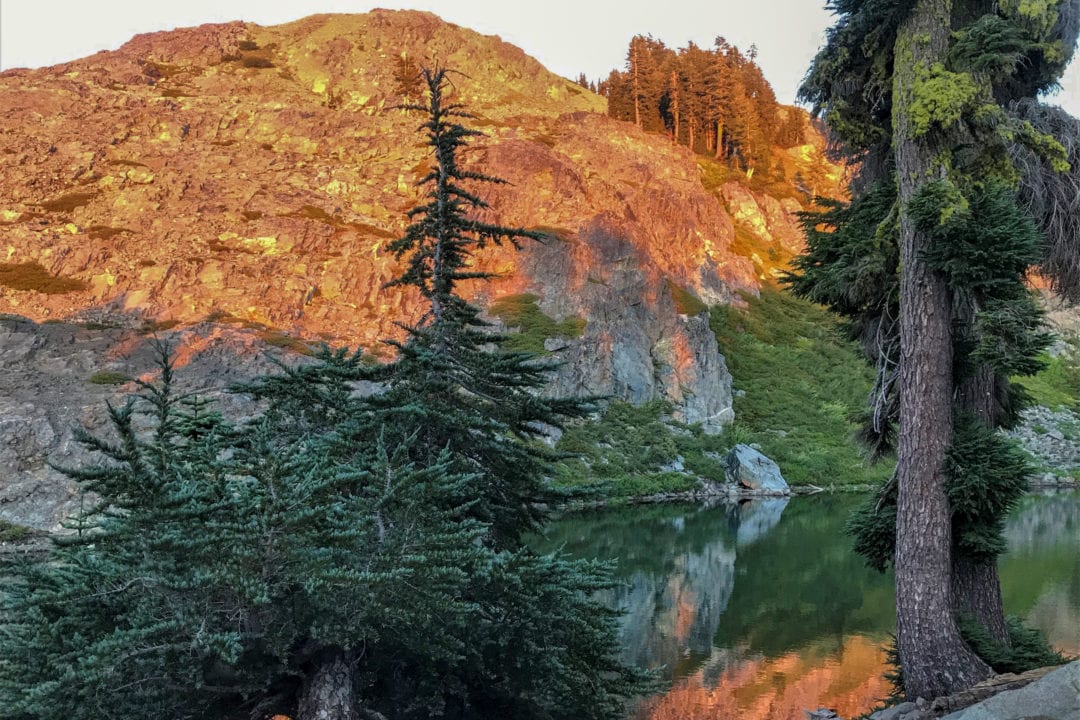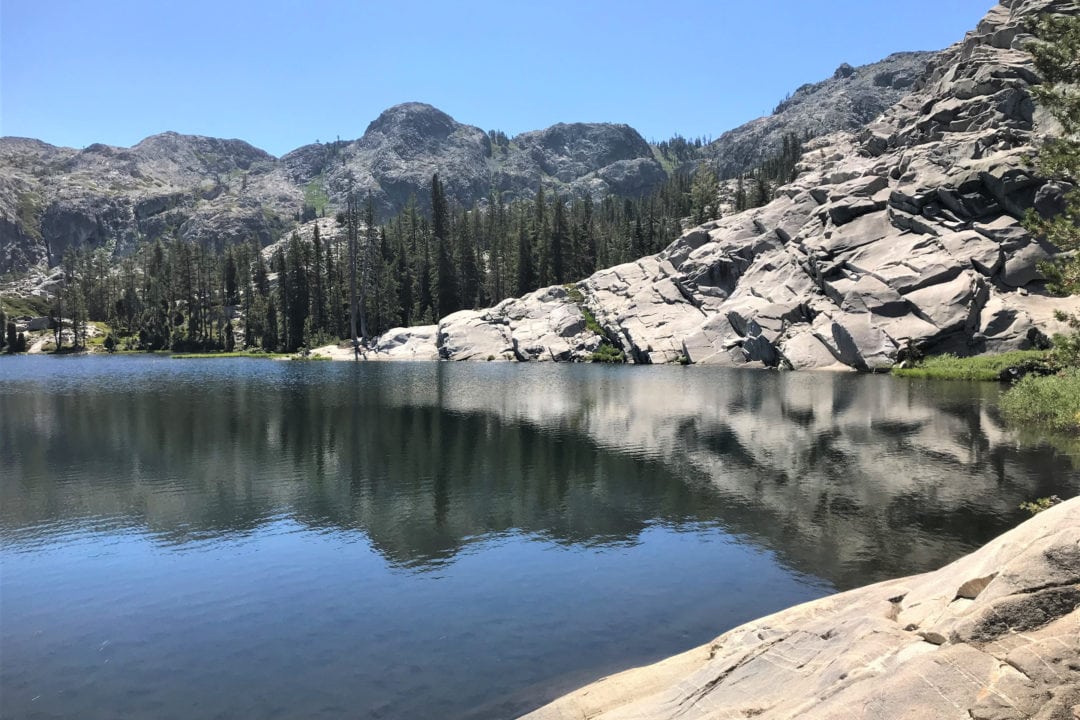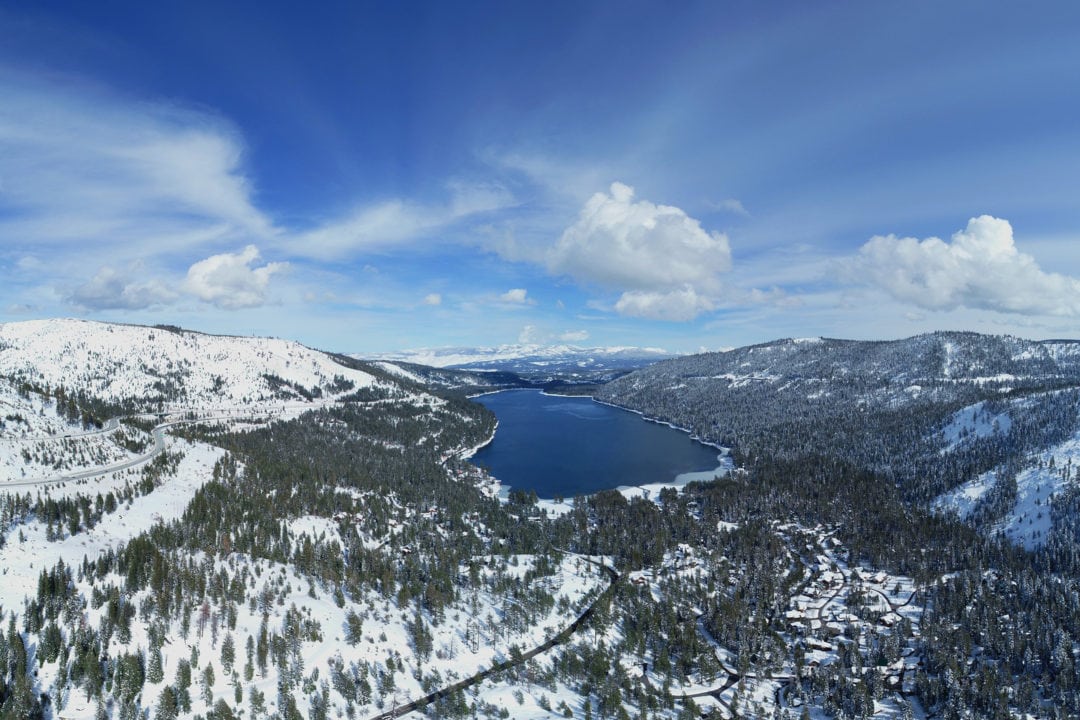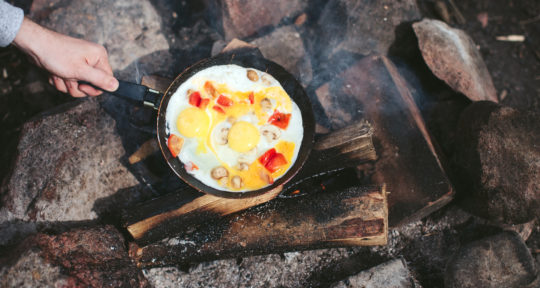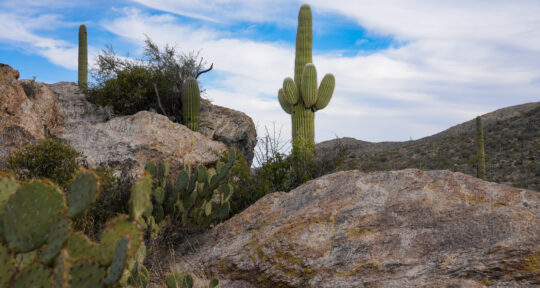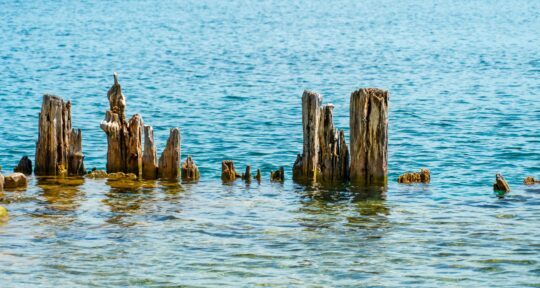Eliza Poor Donner was not quite 4 years old yet when she ate her uncle.
One of the youngest members of the notorious, ill-fated Donner Party—a group of pioneers headed west in 1846—Eliza and her kin were already low on food when a mid-October snowstorm trapped them in the Sierra Nevada Mountains. By January, the party was starving. Subsisting on boiled shoe leather, ox hides, and the occasional field mouse, they grew hollow-eyed and dizzy. Some raged with lunacy, others could do little more than sleep. One by one, they succumbed to starvation, hypothermia, illness, and accident. And one by one, the survivors ate them.
As I prepare for a quick two-day backpacking trip with my boyfriend to the Tahoe National Forest—not far from Donner Lake and Alder Creek where the Donner Party spent their winter of misery—cannibalism plagues my thoughts. The Sierra Nevada are equal parts beautiful and savage. The mountain range, which runs 400 miles along the eastern flank of California, is a fairytale land of granite peaks, rushing waterfalls, and giant sequoia trees. Three national parks—Yosemite, Sequoia, and Kings Canyon—and Lake Tahoe, the largest alpine lake in North America, are all nestled within.
Glacier Lake at sunset. | Photo: Shoshi Parks Five Lakes Basin. | Photo: Shoshi Parks Donner Lake. | Photo: Creative Commons
But at an elevation between 5,900 and 7,500 feet above sea level, the air here is so thin that every breath can be a battle. At sunset, even the hottest days give way to frigid glacial breezes and the weather can turn from hospitable to hostile on a dime. In just a few weeks, conditions will be ripe for some of the worst wildfires in the area’s recent history.
But today, only a pair of aging hiking boots stand between me and a broken ankle or a slip-and-fall down the granite slickrock.
Unlike the Donner Party, we’ve spent enough time in the Sierras to know what could happen. We disregard the forecast—which promises sunny skies and temperatures in the mid-80s—and pack ponchos, emergency blankets, puffer jackets, and gloves just in case. As usual, I overstock our food supplies, filling our bear canister to the brim with high-calorie snacks that, were we to get lost or trapped in a landslide, would keep us going for an extra 48 hours. Any longer, our options won’t be so appetizing. If I had to eat my boyfriend to survive, could I?
Luck runs out
When the Donner Party left Illinois in the spring of 1846, they were just one of thousands of families called to the Oregon Trail by the siren song of Manifest Destiny. With their sights set on California instead of the Pacific Northwest, the group changed course midway, electing to follow a new route. The Hasting’s Cutoff, described in The Emigrant’s Guide to Oregon and California, was a more direct trail to their destination.
The journey, which included crossing 80 miles of the Great Salt Lake Desert and a steep descent in Utah’s Wasatch mountain range, came with a warning. “Unless you pass over the mountains early in the fall,” wrote Lansford Hastings, “you are very liable to be detained, by impassable mountains of snow, until the next spring, or, perhaps, forever.” By the time the Donner Party reached the foot of the Sierra Nevada in mid-October 1846, the last emigrants of the season, it was already too late.
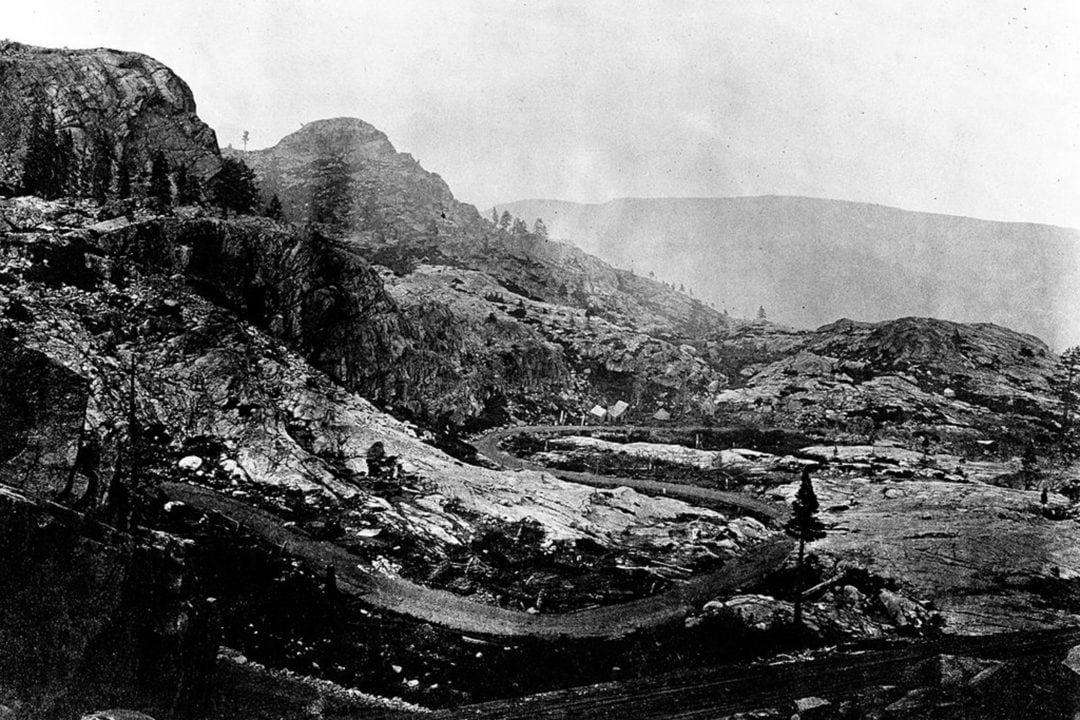
Close to two centuries later, the Sierras have pulled out all the stops for our backpacking trip. The trail is studded with sapphire lakes and emerald groves of pine and cedar. In the meadows, pink and purple wildflowers bloom and critters rustle in the underbrush. There’s little to no chance I’ll be eating human flesh this week.
The Donner Party wasn’t so lucky.
Leather and bone
What had already been a tough journey across the West deteriorated along with the weather. The first October storm separated the group in two. One made it as far as the shores of Donner Lake in today’s Truckee, California. The other was stuck a day’s hike away at Alder Creek. The winter storms kept coming, dumping foot after foot of snow on the lean-tos, tents, and rustic cabins in which the emigrants were trapped. What was left of their food was dwindling fast.
By mid-November, leather and bone was all that stood between the Donner Party and starvation. “Pieces of beef hide were cut into strips, singed, scraped, boiled to the consistency of glue, and swallowed with an effort; for no degree of hunger could make the saltless, sticky substance palatable,” wrote Eliza Poor Donner in her memoir The Expedition of the Donner Party and its Tragic Fate. “Marrowless bones which had already been boiled and scraped, were now burned and eaten, even the bark and twigs of pine were chewed in the vain effort to soothe the gnawings which made one cry for bread and meat.”
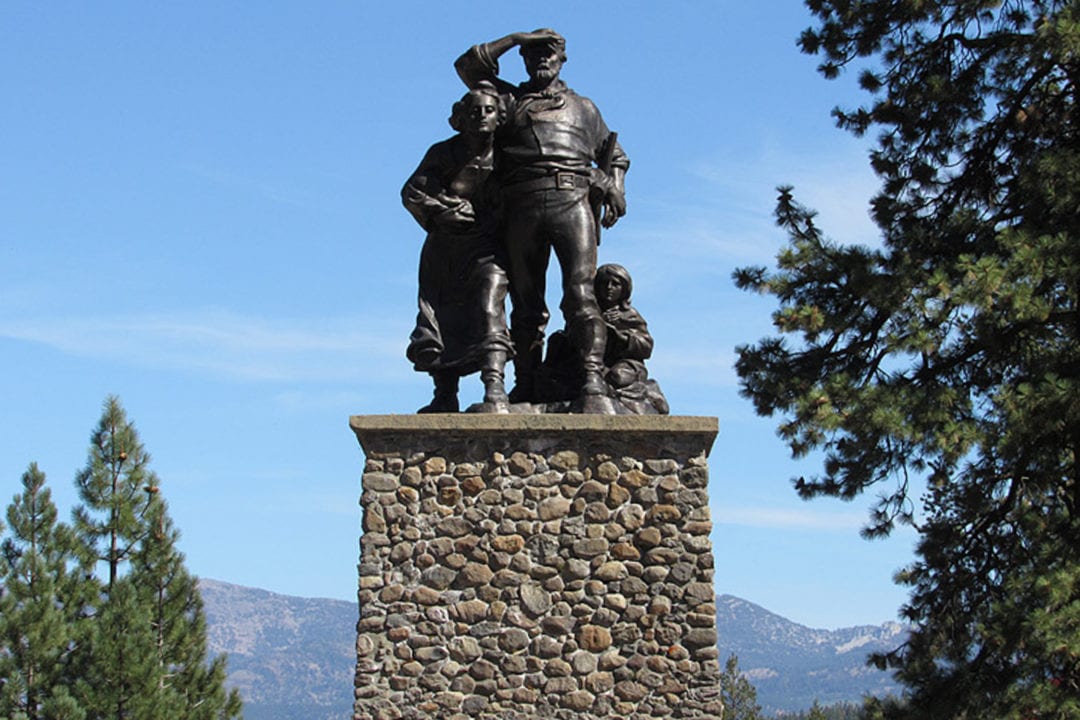
Out of options and desperate for relief, the party sent out “The Forlorn Hope,” more than a dozen men, women, and children in snowshoes bound for California. The group packed six days’ worth of meager rations and set out. But by the eighth day, 48 hours after their food had run out, lost and confused by a raging blizzard, the party embraced their fate. One of them would have to be eaten to save the others.
Not long after deciding on cannibalism, the punishing conditions gifted the party four deaths in quick succession. But even that meat wasn’t enough and within days, the ragged band was once again slipping into starvation. After nine days without food, William Foster shot and killed two Miwok Indian men traveling with the party. The murders kept the group going until they reached help. In the end, only seven members of The Forlorn Hope made it out alive. They’d been traveling for 33 days.
Back at the camps, the survivors were growing increasingly desperate. With no way of knowing whether The Forlorn Hope had made it to their destination, eventually they, too, had no choice but to eat the dead. When rescuers arrived at Alder Creek in March, they found four children, their faces stained with blood, consuming the half-cooked liver and heart of their father. Or so the story goes.
Fact or fiction?
Only some of the 48 survivors of the Donner Party—the last of whom arrived safely at Sutter’s Fort in California on April 29, 1847, almost exactly a year after departing Illinois—acknowledged that they had eaten human flesh to survive. The legend, however, had wings. As early as 1854, tourists began flocking to the cabin site at Donner Lake to satisfy their morbid curiosities and in 1928, the State of California dedicated the Donner Memorial State Park in memory of the emigrants who had lost their way.
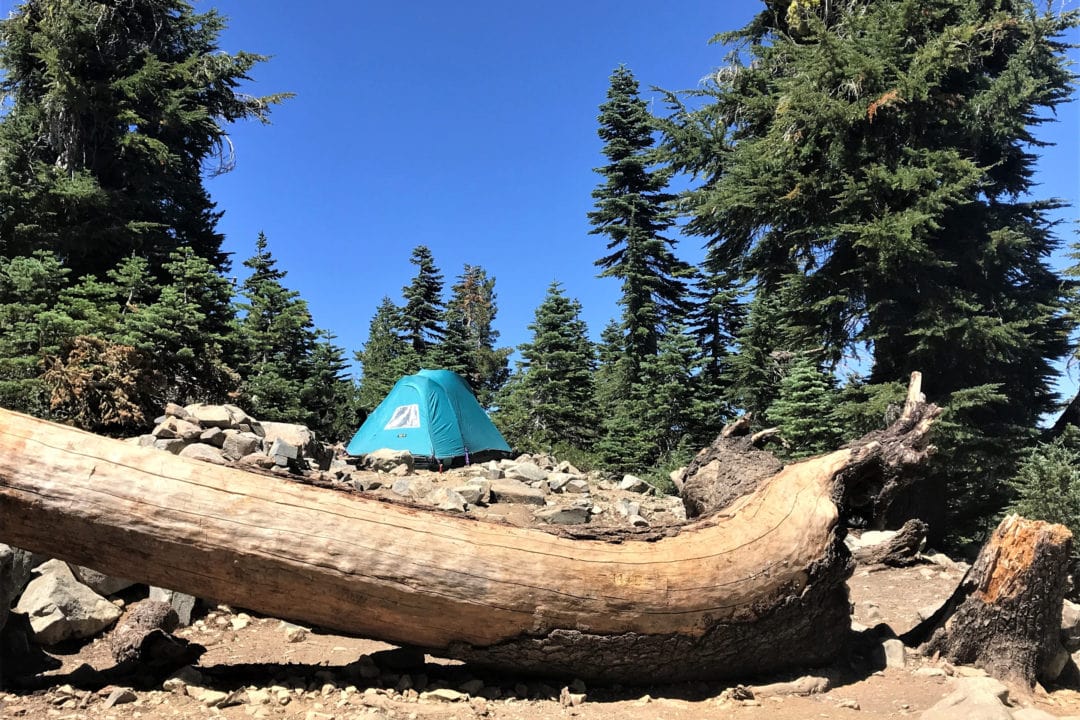
Our bear canister is still full of food as we deflate our sleeping mats and roll up our tent on the third day of our trip. We’ve spent the past days soaking up stunning views and swimming in impossibly clear lakes. We are hale and hearty and not an ounce of flesh was lost to the Sierras. A few months later and this could have been a very different trip.
Lacing up my boots, I turn to my boyfriend and say, “I’m so glad I didn’t have to eat you this week!” He looks at me with a smile and says, “I’ve been thinking the same thing.”
